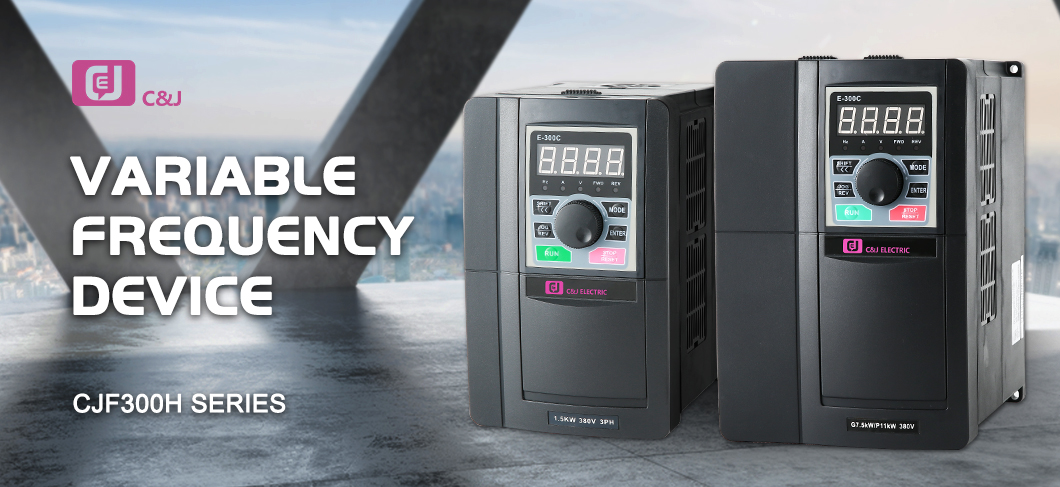Title: Unlocking the power of frequency converters: increasing efficiency and saving costs
The first paragraph: Introduction to frequency converter
A frequency converter, also known as a variable frequency drive (VFD), is a power conversion device that regulates and controls the speed of an electric motor. By regulating the frequency and voltage supplied to the motor, the frequency converter can precisely control the motor’s speed and torque. These versatile devices are used in a variety of industries, from manufacturing and HVAC systems to renewable energy and transportation. In this blog, we will explore the capabilities of frequency converters, discuss their benefits, and shed light on their critical role in improving efficiency and cost savings.
Second paragraph: Working principle of frequency converter
The frequency converter converts the fixed frequency and voltage of the input power supply into adjustable frequency and voltage, forming a variable frequency output suitable for driving different types of motors. By adjusting the input frequency, the frequency converter can control the speed of the motor. Incoming alternating current (AC) is first rectified using a rectifier and then converted to direct current (DC). An inverter circuit is then used to convert the DC voltage back to AC voltage with adjustable frequency and voltage. This adjustable AC output is fed into the motor, allowing precise control of its speed and torque.
Paragraph 3: Main advantages of frequency converters
Frequency converters offer several advantages in various industrial applications. First, they allow the motor to run at optimal speed rather than continuously at full power, resulting in significant energy savings. By adjusting speed to meet specific load requirements, frequency converters can reduce energy consumption, thereby lowering electricity bills. Second, they improve process control by providing precise speed regulation, thereby increasing productivity and reducing equipment wear. In addition, the frequency converter provides soft start and stop functions, thereby reducing mechanical stress and extending the service life of motors and machinery. Additionally, frequency converters eliminate the need for mechanical controls such as throttles and dampers, simplifying system complexity and maintenance.
Paragraph 4: Application of frequency converter
Frequency converters are widely used in various industries. In manufacturing, they are used in machines such as conveyors, pumps and compressors to optimize energy consumption and facilitate production line control. Variable speed drives are also an important part of modern HVAC systems, allowing precise control of ventilators, chillers and pumps to improve comfort and energy efficiency. In renewable energy systems such as wind turbines and solar panels, frequency converters play a vital role in converting the variable-frequency DC power generated into grid-compatible AC power. In addition, frequency converters are used in electric vehicle propulsion systems to regulate motor speed and torque, enabling efficient energy use and extending battery life.
Paragraph 5: Factors to consider when selecting an inverter
When selecting a frequency converter, there are several factors to consider. First, the power rating should match the motor’s power specifications to ensure compatibility. The voltage and frequency range of the inverter must also be consistent with the available power supply. Additionally, control strategies, such as voltage vector control or direct torque control, should be evaluated based on the required motor performance. It is crucial to determine the required protection features, such as overcurrent and overvoltage protection, to protect the motor and inverter from potential damage. Finally, ease of installation, user-friendliness and the availability of manufacturer support services are equally important considerations.
Paragraph 6: Return on investment and cost savings
Over time, an investment in a frequency converter can result in significant cost savings and an attractive return on investment (ROI). Frequency converters help reduce long-term operating costs by reducing energy consumption, optimizing system performance and extending equipment life. Additionally, the enhanced process control provided by frequency converters ensures increased productivity, thereby increasing output and profitability. When evaluating return on investment, it is important to consider the initial purchase and installation costs, as well as the expected energy savings and productivity gains over the life of the frequency converter system.
Paragraph 7: Conclusion
In summary, frequency converters are an important tool that brings efficiency, flexibility and cost savings to various industries. By controlling motor speed and torque, they enable energy optimization, process control and extended equipment life. With applications ranging from manufacturing and HVAC systems to renewable energy and transportation, frequency converters have become an indispensable component in modern technological systems. Careful consideration and selection of the right frequency converter based on specific needs and requirements can result in significant cost savings, increased productivity and a sustainable approach to energy use. Adopting this technology is the only way to improve operational efficiency, reduce costs, and create a green future.
Post time: Sep-14-2023


